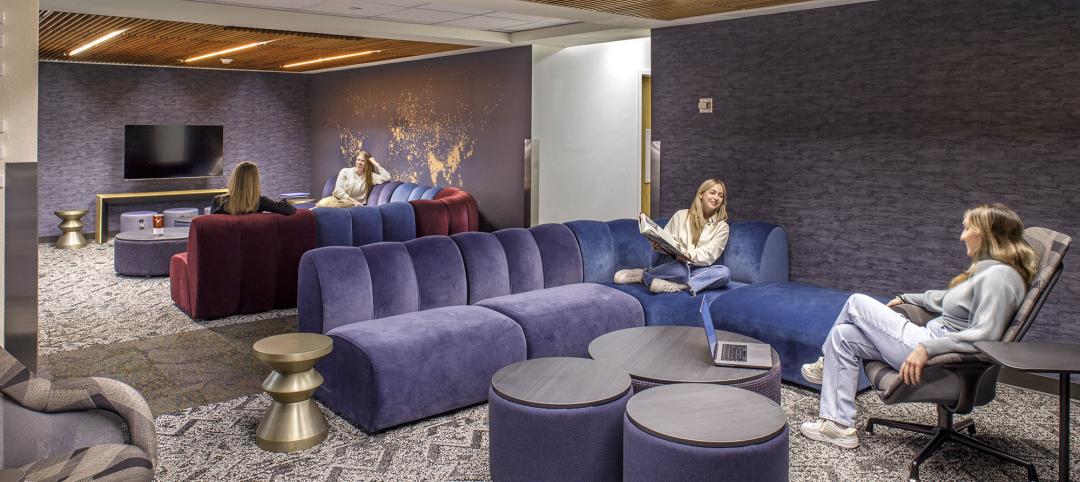In celebration of National Tile Day, Coverings, North America's leading tile and stone exhibition, has announced the top 10 tile trends for 2024. These trendsetting styles offer a glimpse into the innovative and exciting tile designs shaping the industry.
This year's trends were chosen by Coverings' sponsors and international tile associations, highlighting the most sought-after looks from across the globe. The chosen styles showcase the diverse possibilities of ceramic tile, from sustainability and durability to beauty and endless design potential. These trend forecasts will be on display at the upcoming Coverings show in Atlanta, April 22-25, 2024.
Top Tile Trends of 2024 Unveiled by Coverings
The following 10 tile trends of 2024 are summarized in alphabetical order:
1. Architectonic
With tile being a historically integral part of buildings, it is no surprise that architecture is a muse for tile manufacturers. Ceramic brands are partnering with industry designer heavyweights to put their own creative stamps on the classic material, while others are inspired by historic buildings and architectural details, from stained glass to Byzantine cut mosaics.

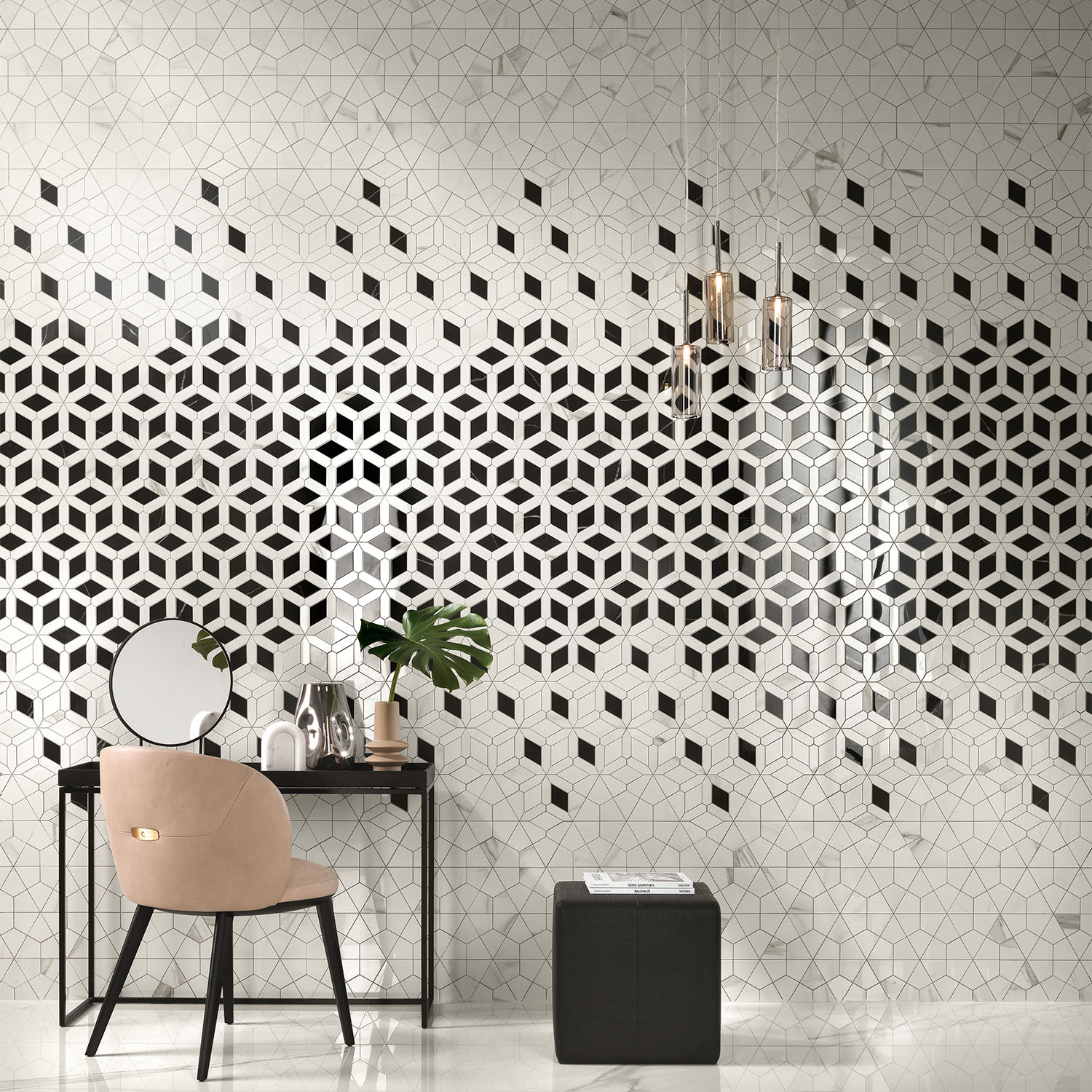 | 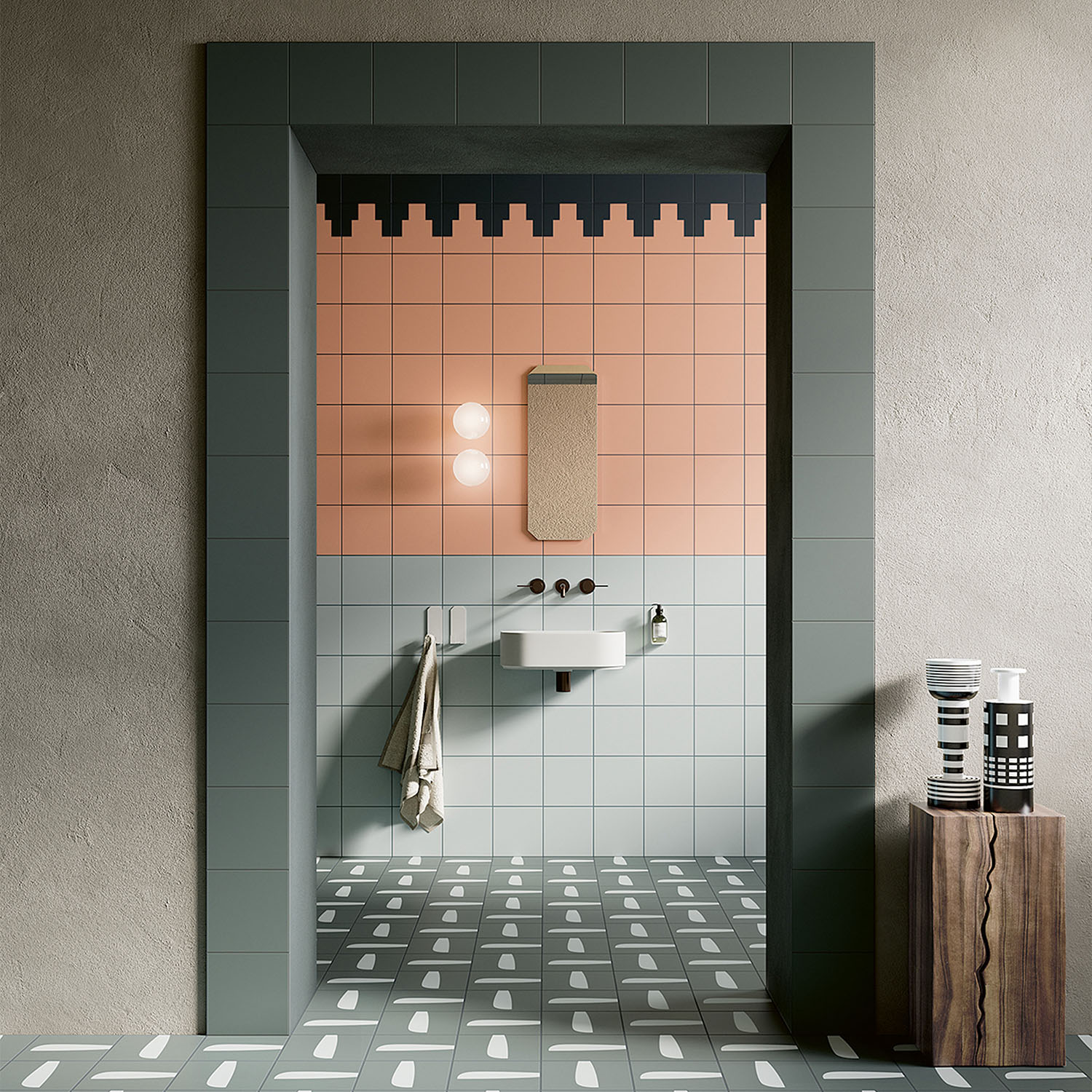 |
2. Beyond Realism
When texture, sheen and reflectivity with color can be digitally manipulated, it is not only possible to recreate anything through ceramics, it is also easy. Modern tile production is at a stage where artistic expression knows no bounds, even when taking on a natural reproduction. The layers of detail that are possible with printing techniques evokes truly visceral experiences. The ability to create fine variances in decorative adornments allows for a ceramicist to play with the characteristics of different substances or introduce other elements of interest in tile.
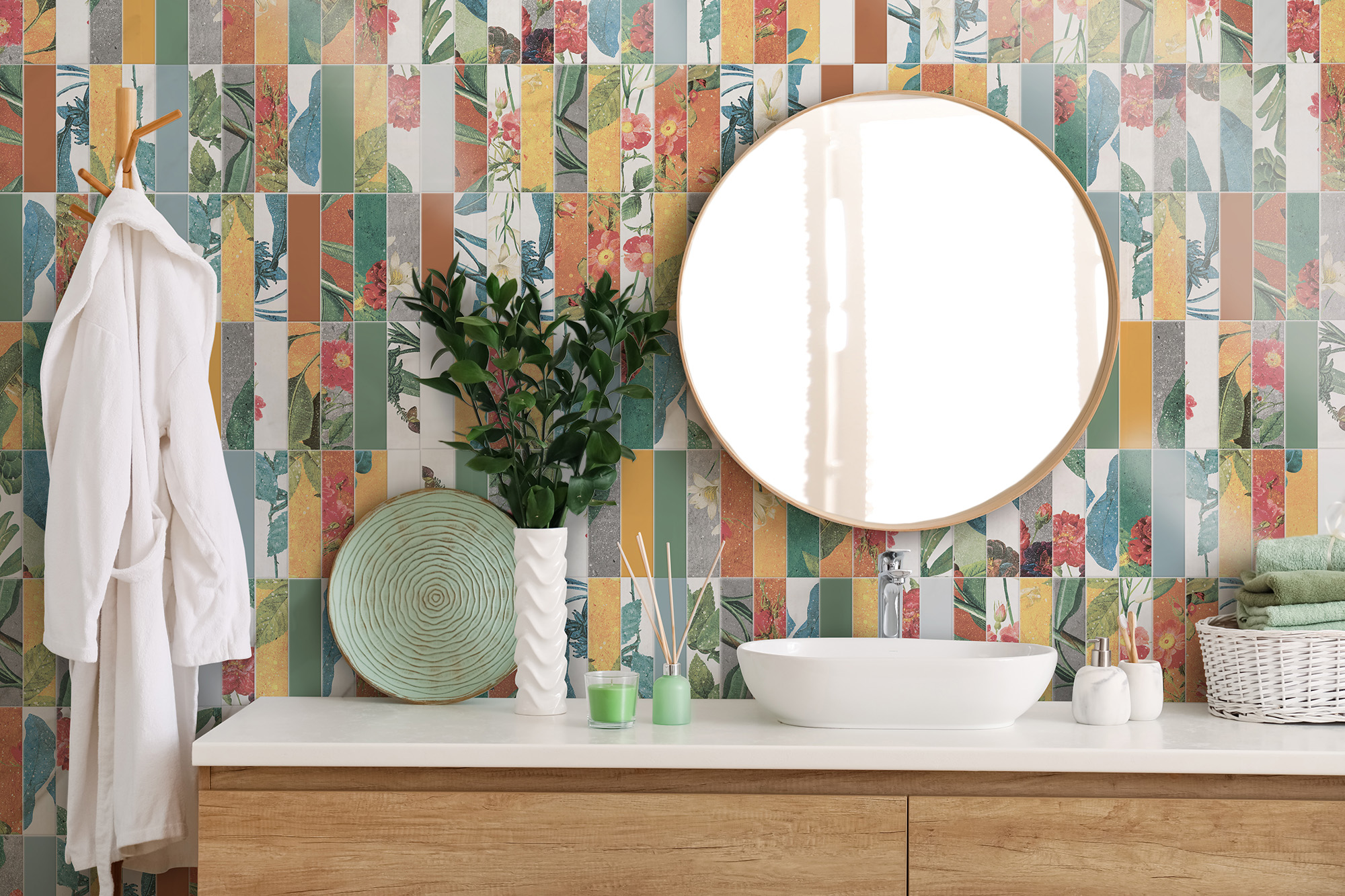
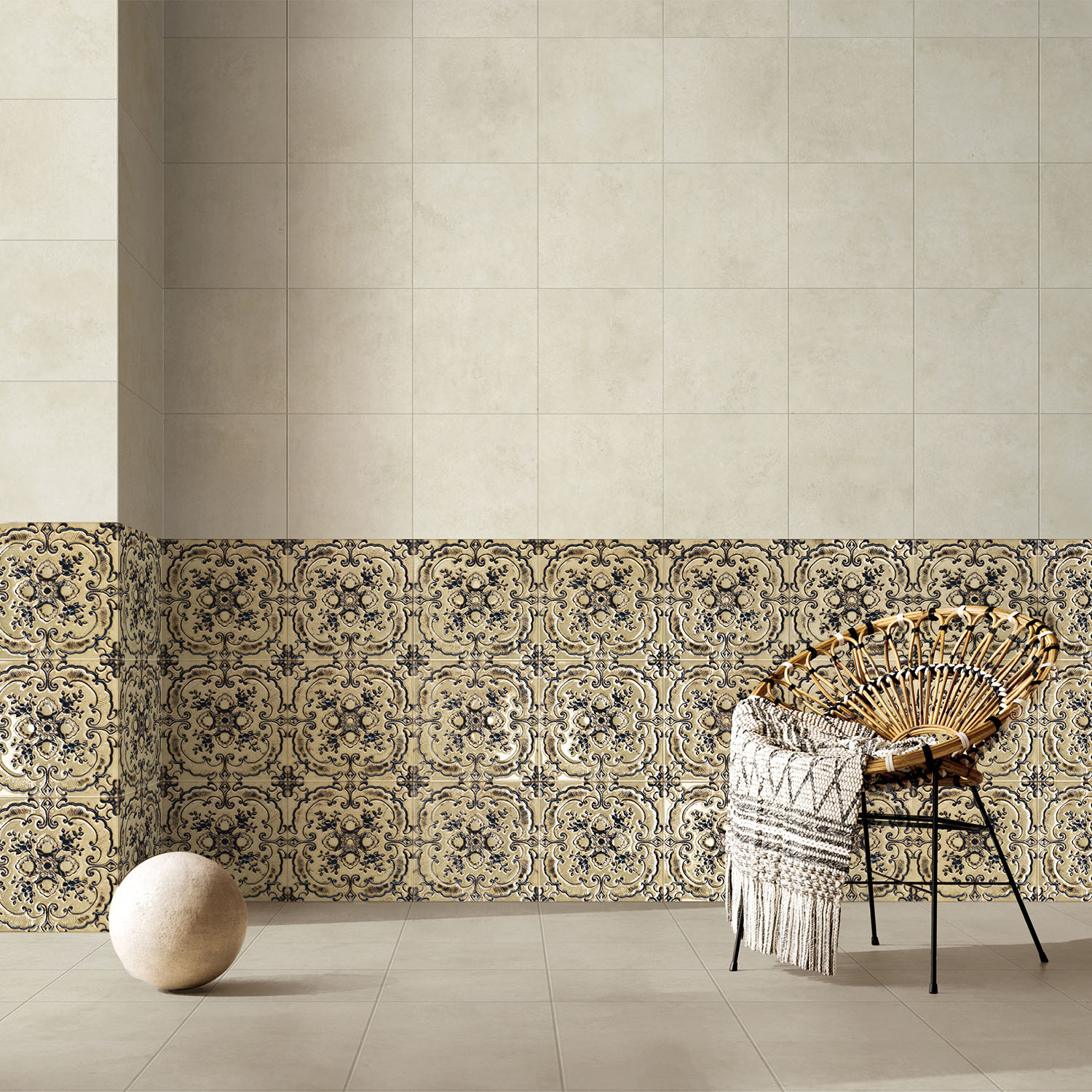 | 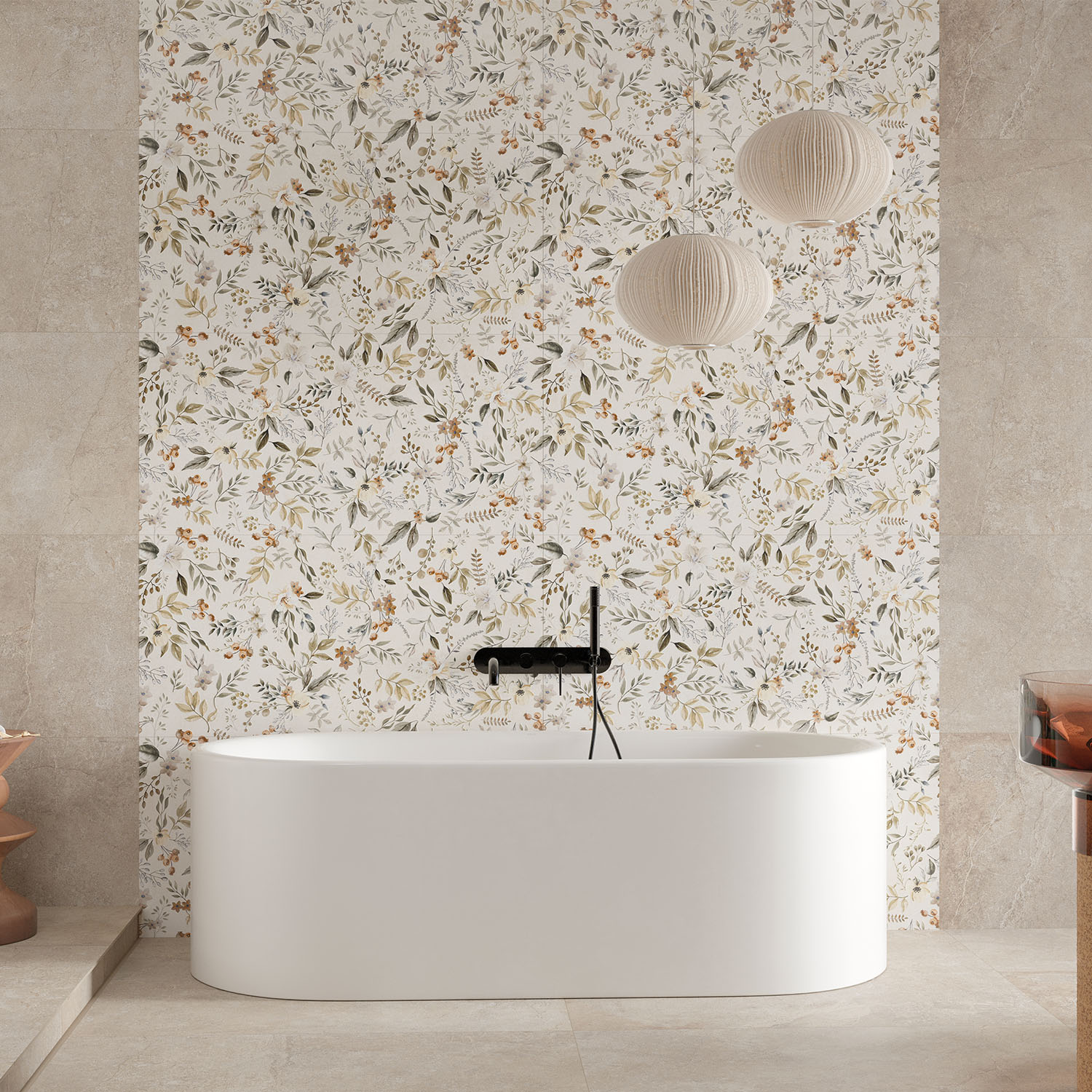 |
3. Contempo Concrete
To complement the raw beauty of contemporary architecture, designers are giving us fresh interpretations of modern cement in porcelain format. Exquisitely colored and perfectly sized aggregates give these designs a handcrafted concrete look and feel. Beautifully brutalist and understatedly elegant, these creative concrete looks embody modernity, sophistication and the bustling tapestry of urban living.
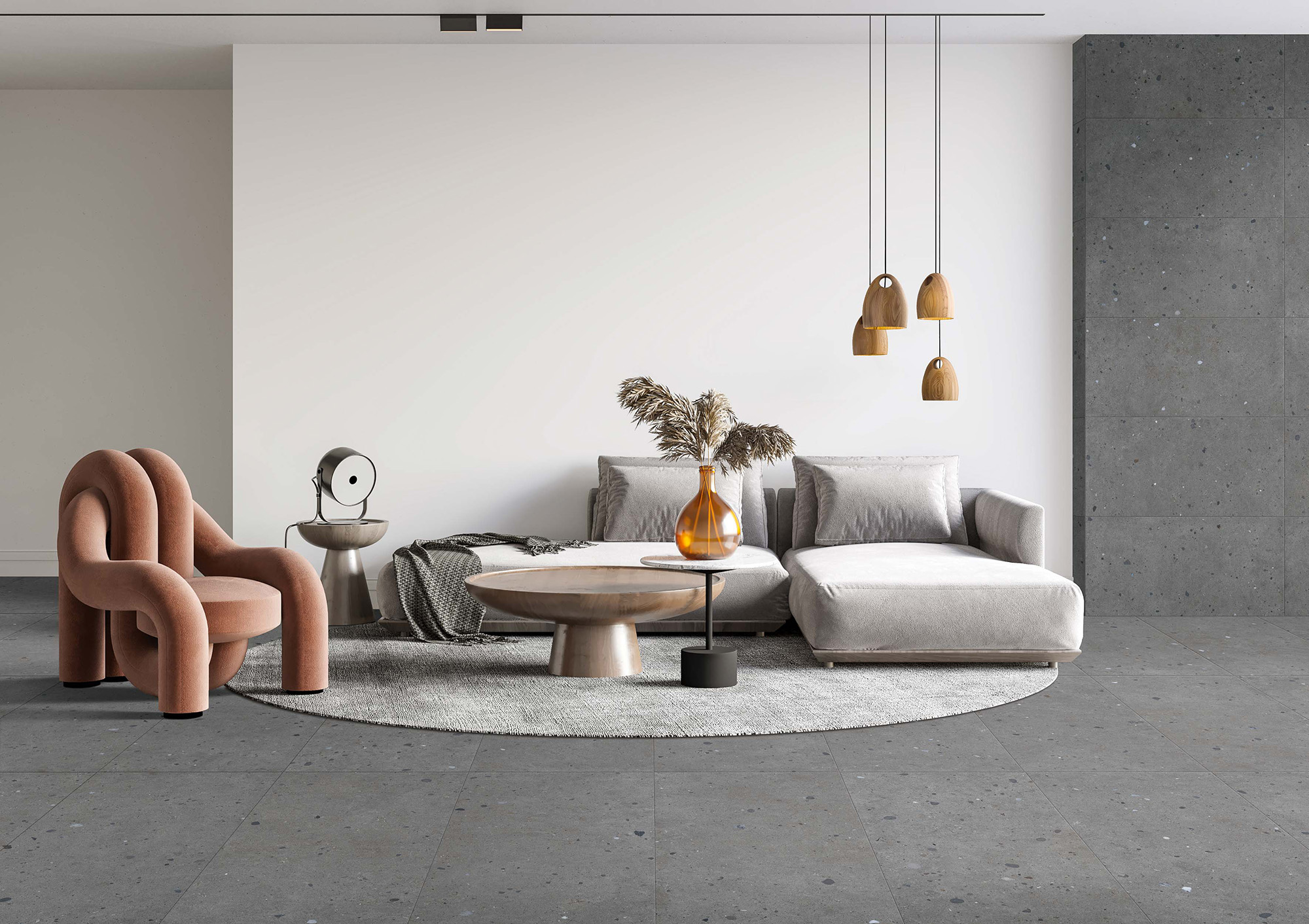
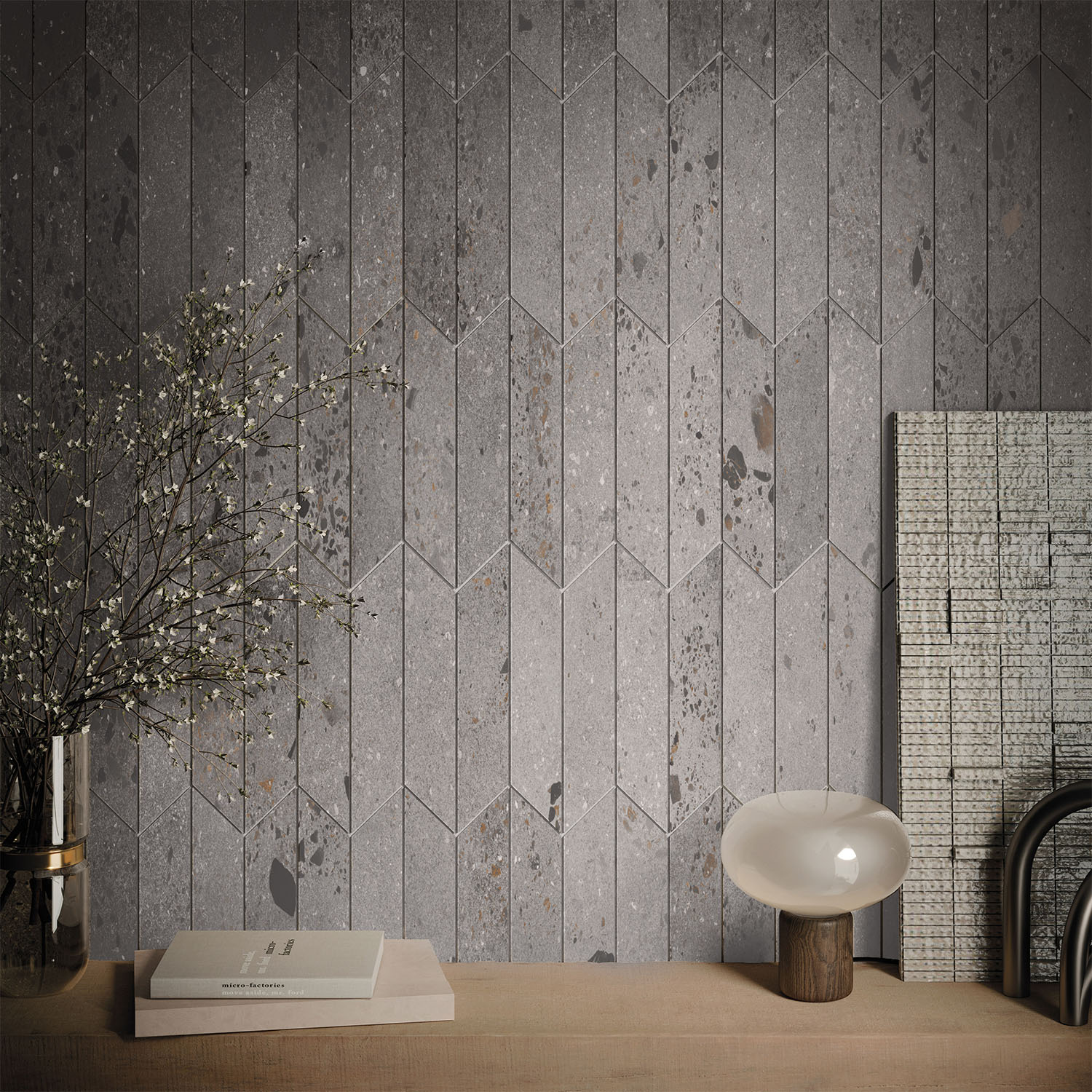 | 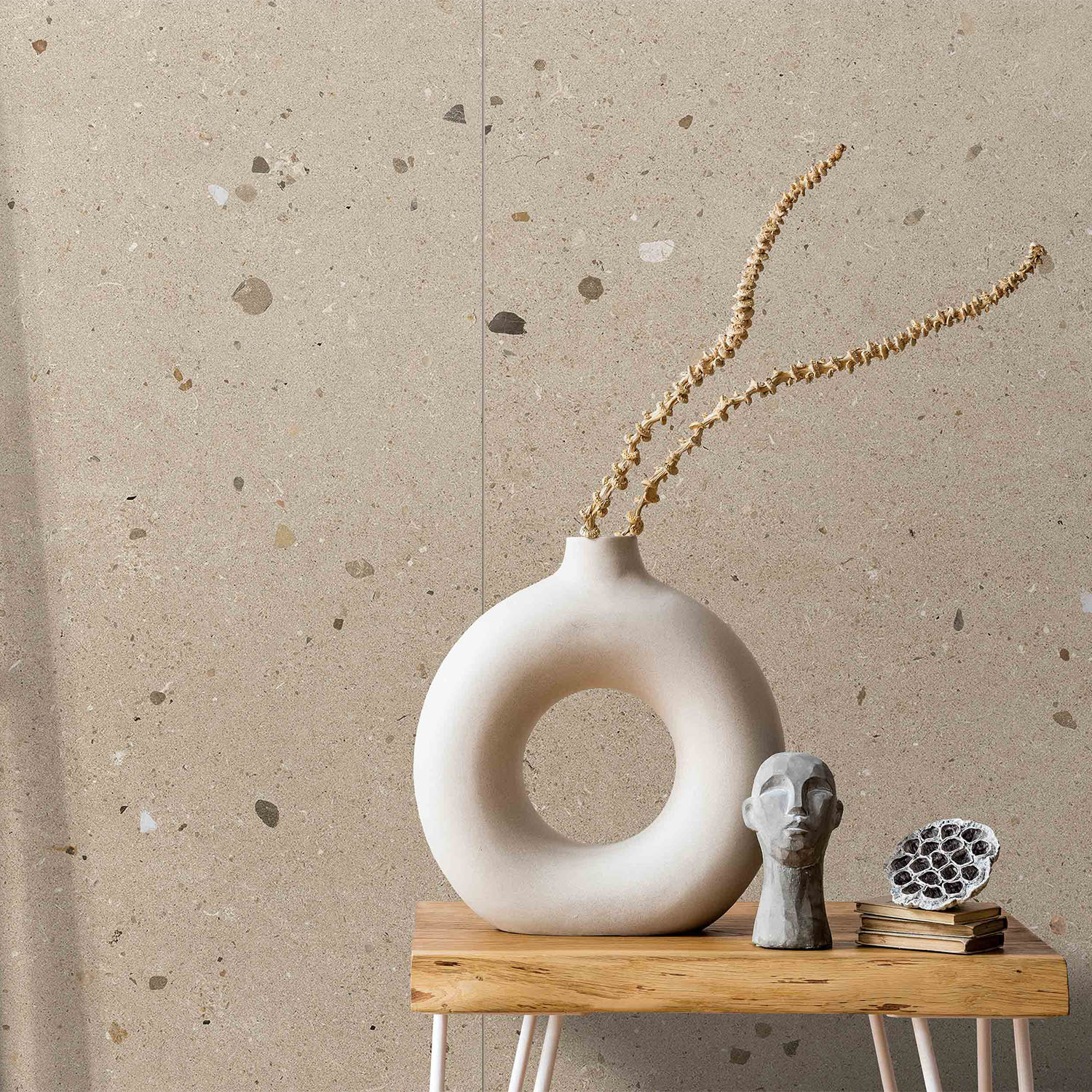 |
4. Organic Grandeur
Innovative glazing technology paired with inspiration from rare natural materials give us surfaces so stunning, you’ll lose your gaze in them. Enhancing effects of light and reflectivity are reproduced in luminous finishes, giving the beauty and depth of marble with the durability of porcelain in color ranges wider than those of natural stone.
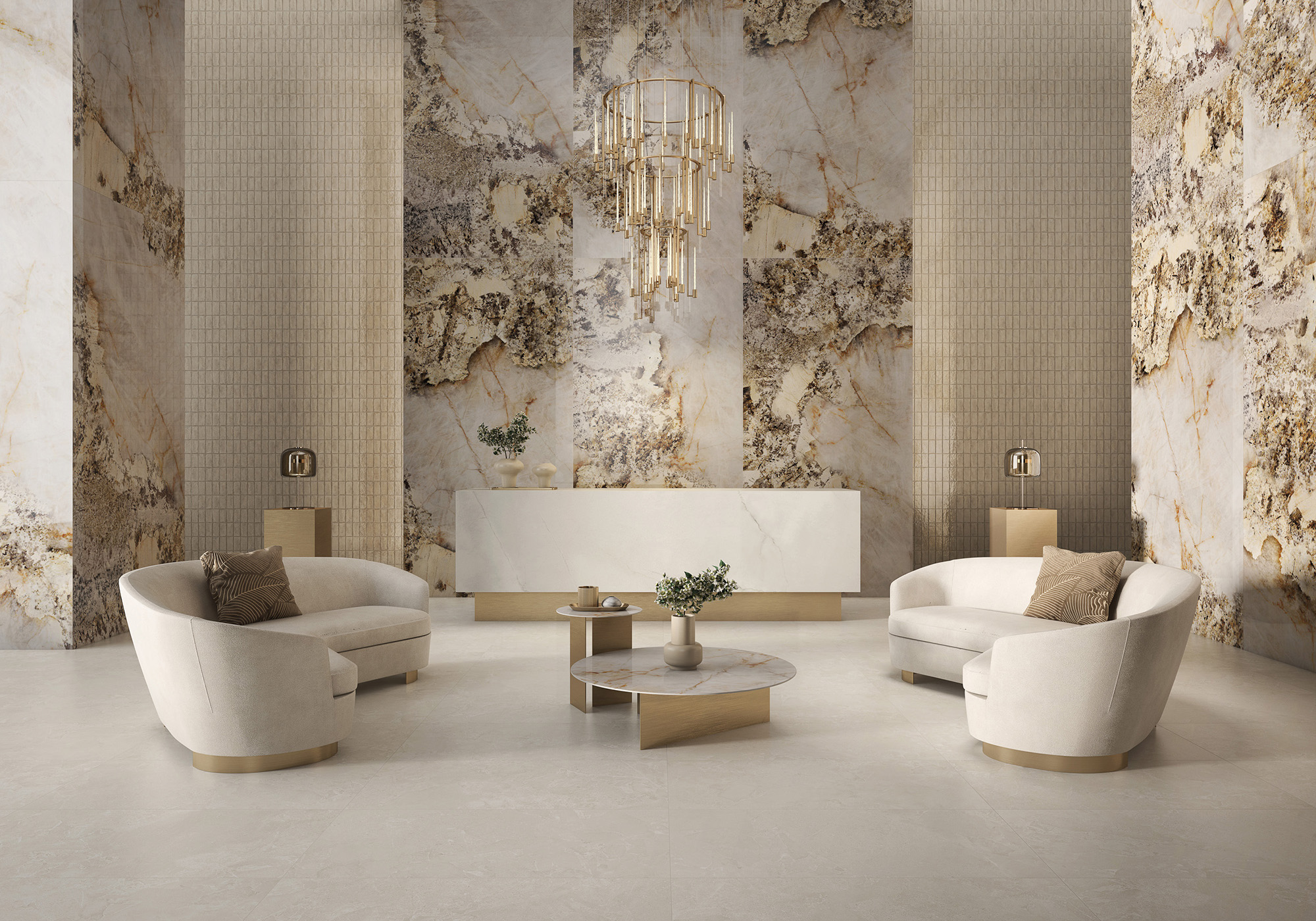
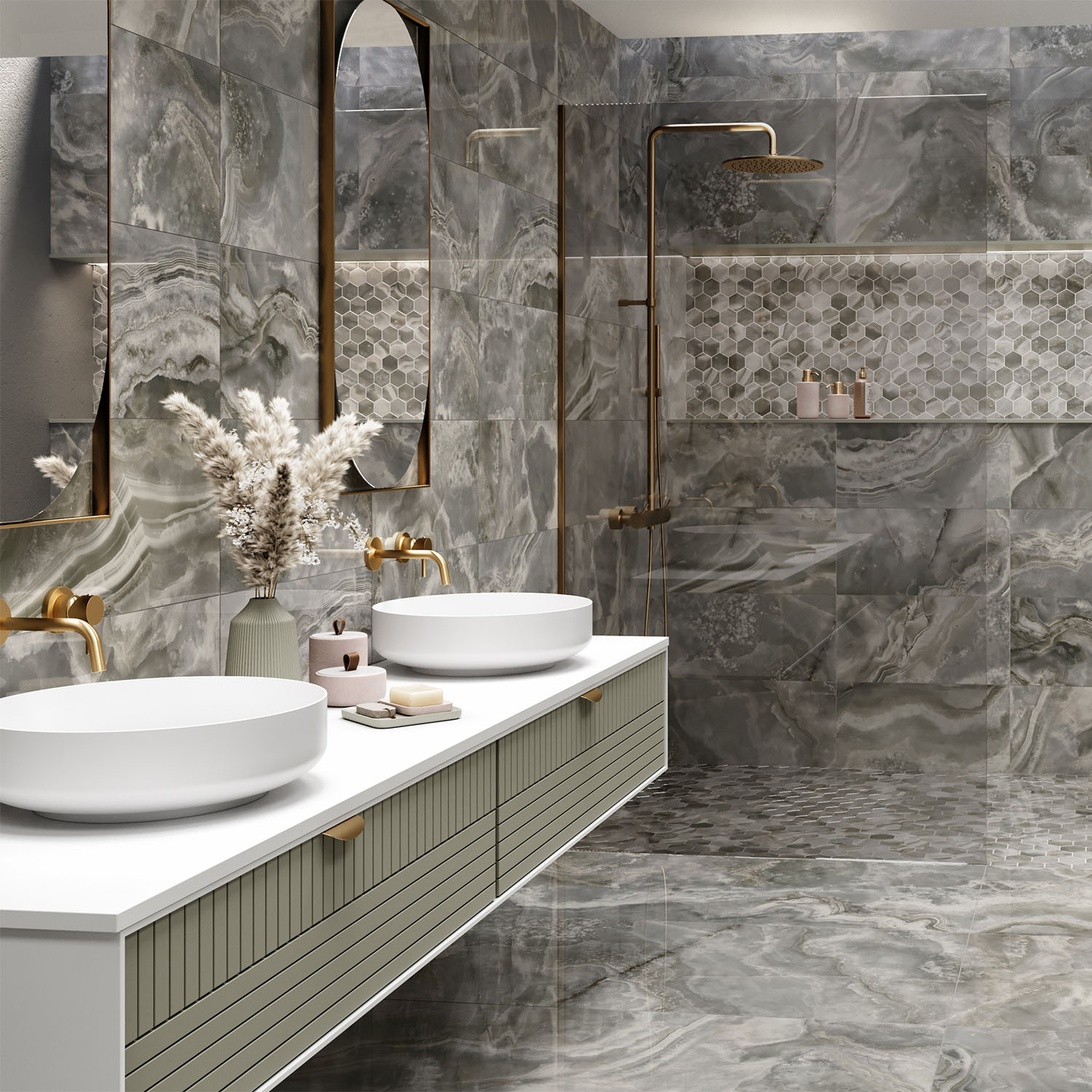 | 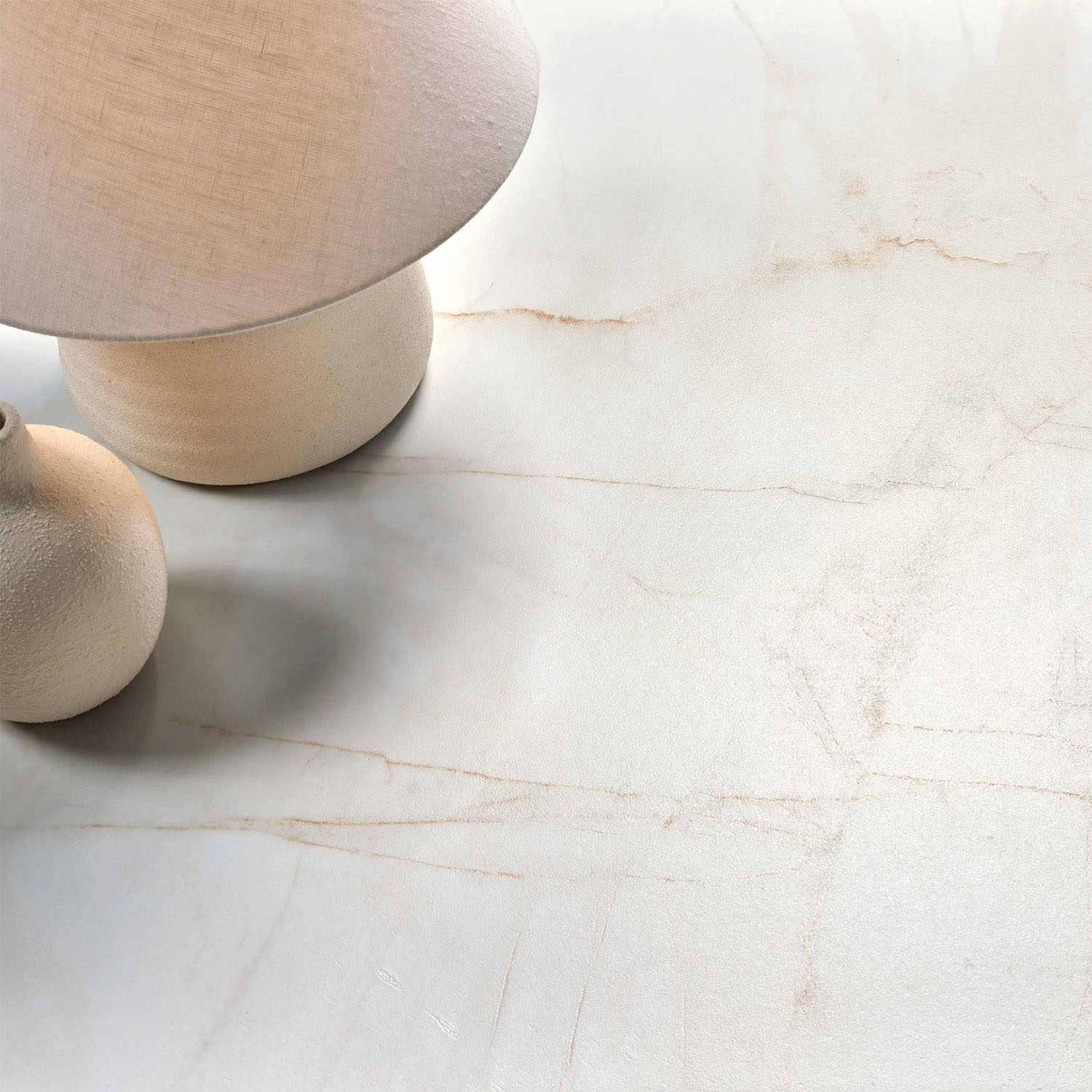 |
5. Porcelain Panels Panache
The world is witnessing and embracing the availability of production-ready versions of full-body porcelain panels. This achievement signifies a momentous milestone as it fulfills a longstanding request from fabricators and specifiers since the mainstream adoption and installation of large-format tiles. These full-body pieces offer the remarkable qualities of heat, stain and scratch resistance, while being sustainable and free from toxic chemicals.
What’s more, manufacturers are turning up the volume on this trend with the look, style and allure of natural stone, spanning many collections mimicking the world's rarest marble and showcasing evocative amalgamations with bright colors and luminous veins. Distinguishing them from vying materials is their capacity to be worked with, using traditional fabrication techniques, making them a cost-effective and versatile choice for exceptional architecture and design applications.
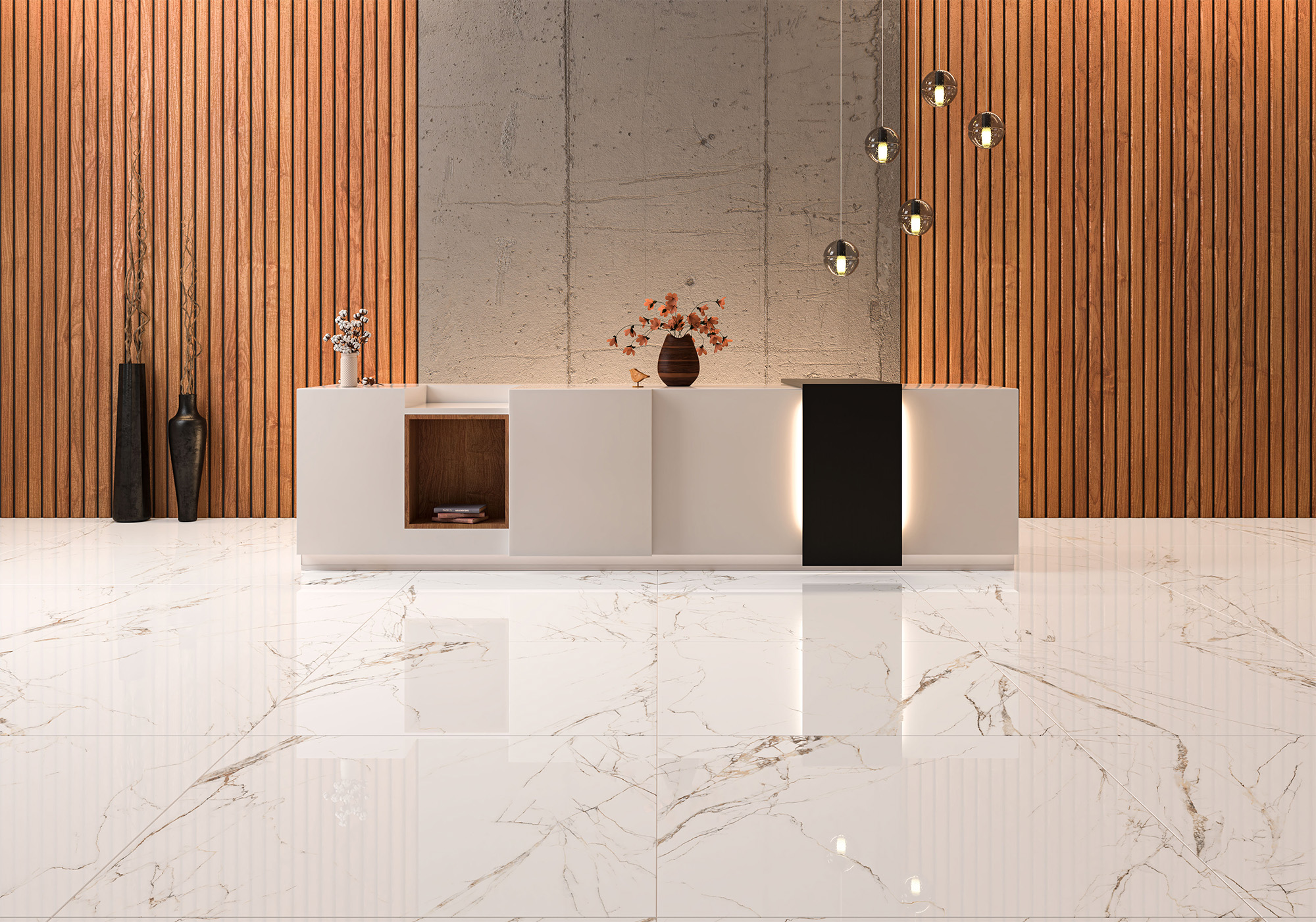
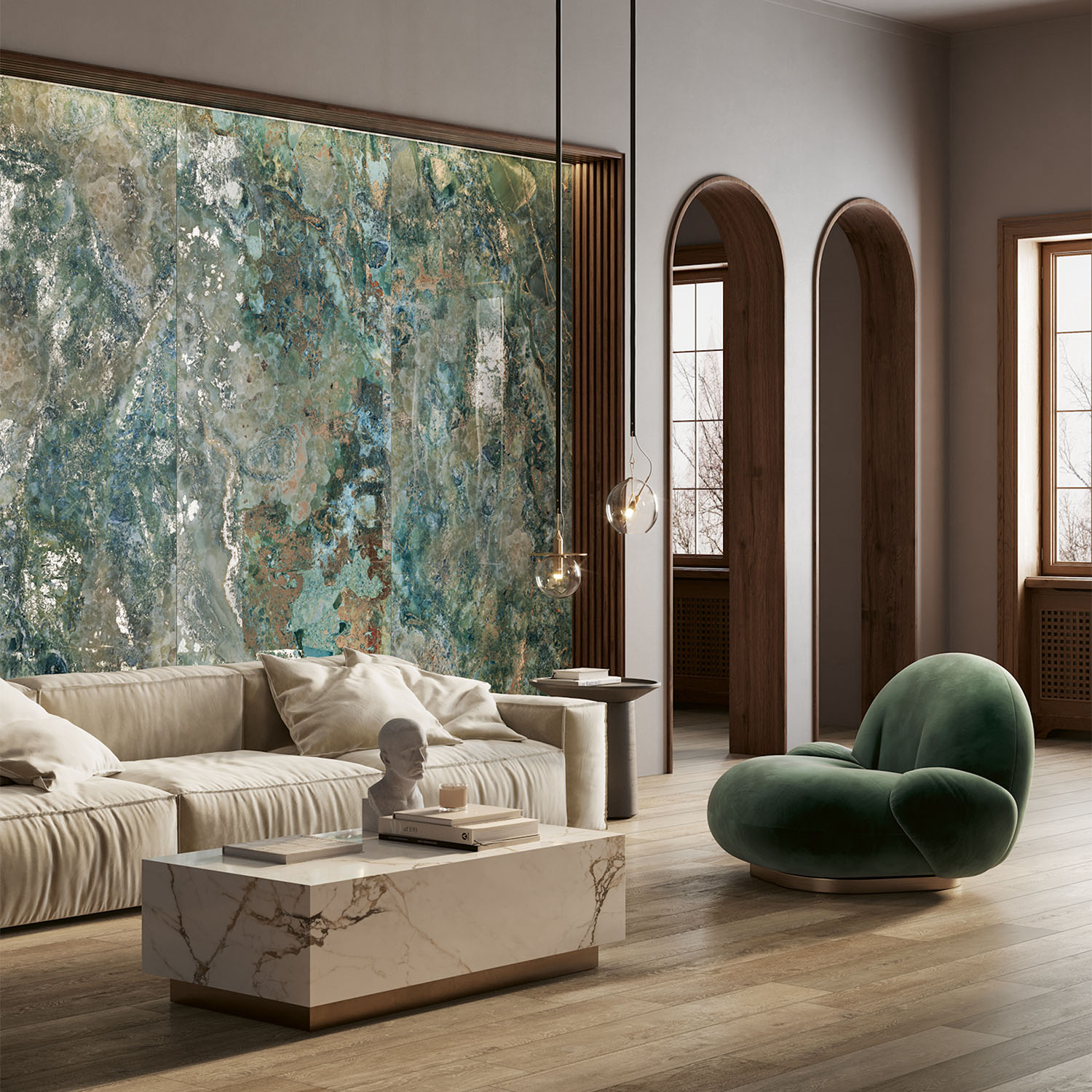 | 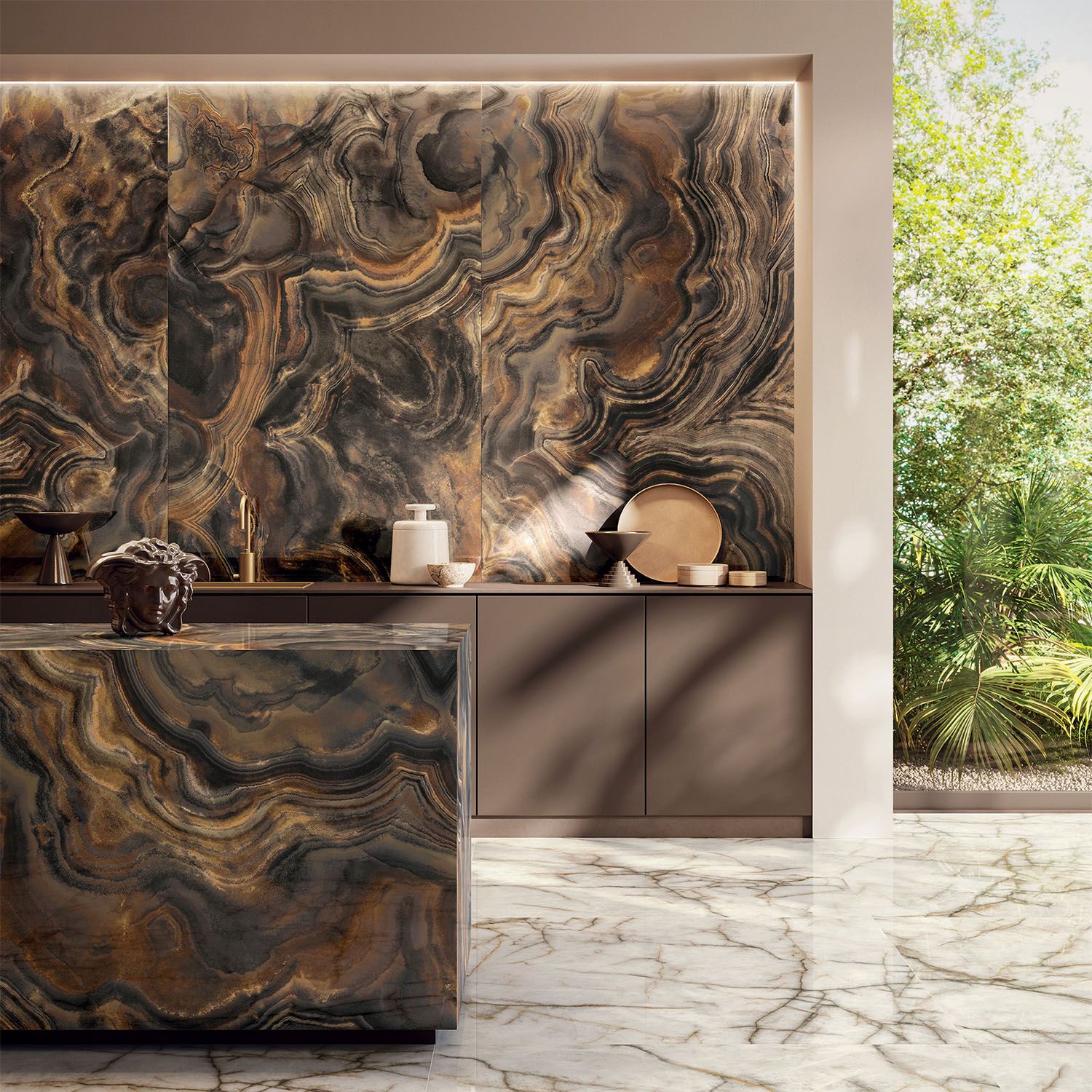 |
6. Seeking Balance
When balance and complementary interactions are fleeting, tile makers look to the birthplace of yin-yang and wabi-sabi for inspiration. While we see ample textile designs translated into ceramic renditions, there is one standout repeated by many this year, "stick mosaics.” Manufacturers are offering their take on this classic Japanese porcelain style, enhancing new lines with gracefully flowing pottery glazes. The appeal of fragmented pieces lies in the delicate interplay between precise straight lines and a gracefully undulating imperfect charm of the coatings.
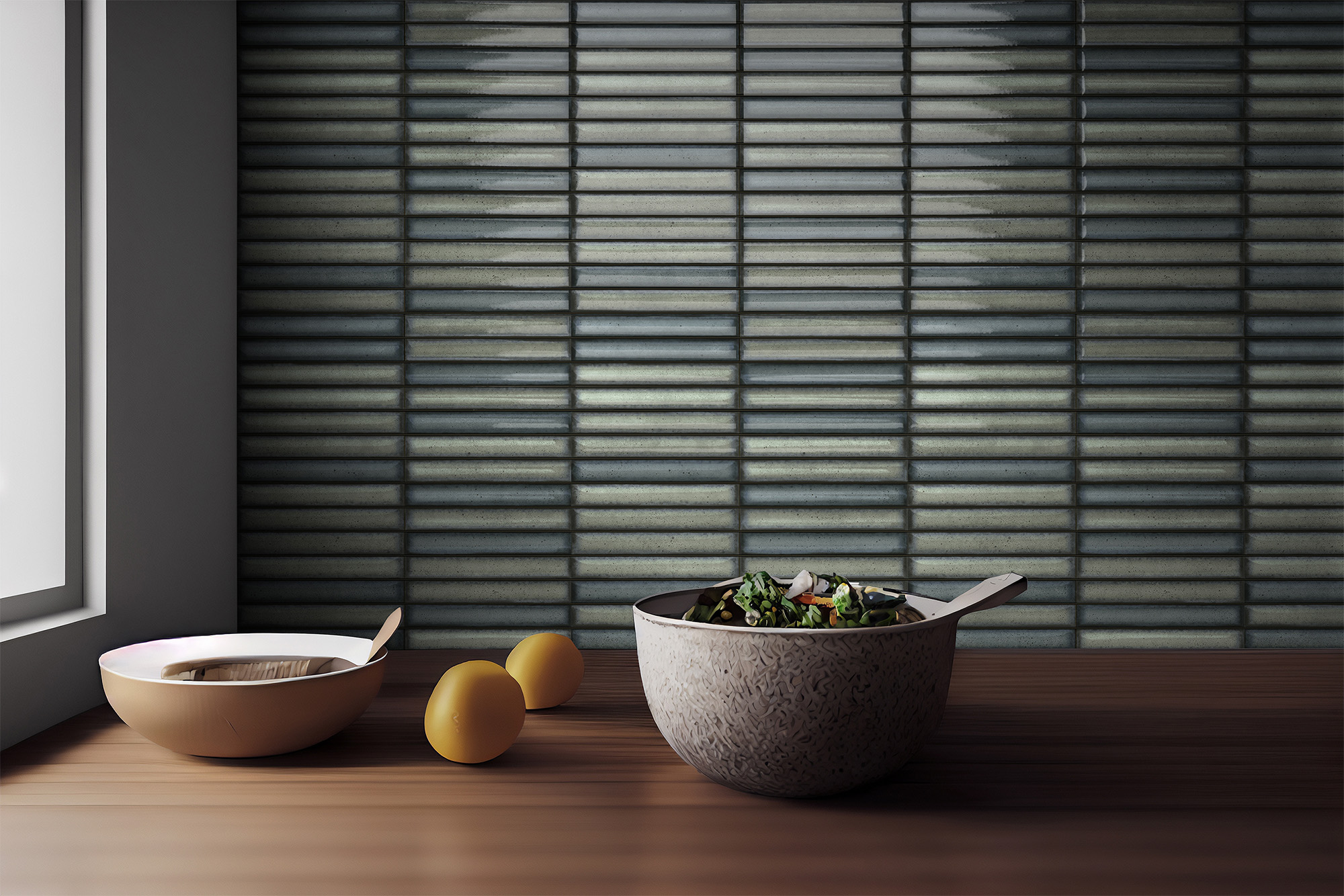
 | 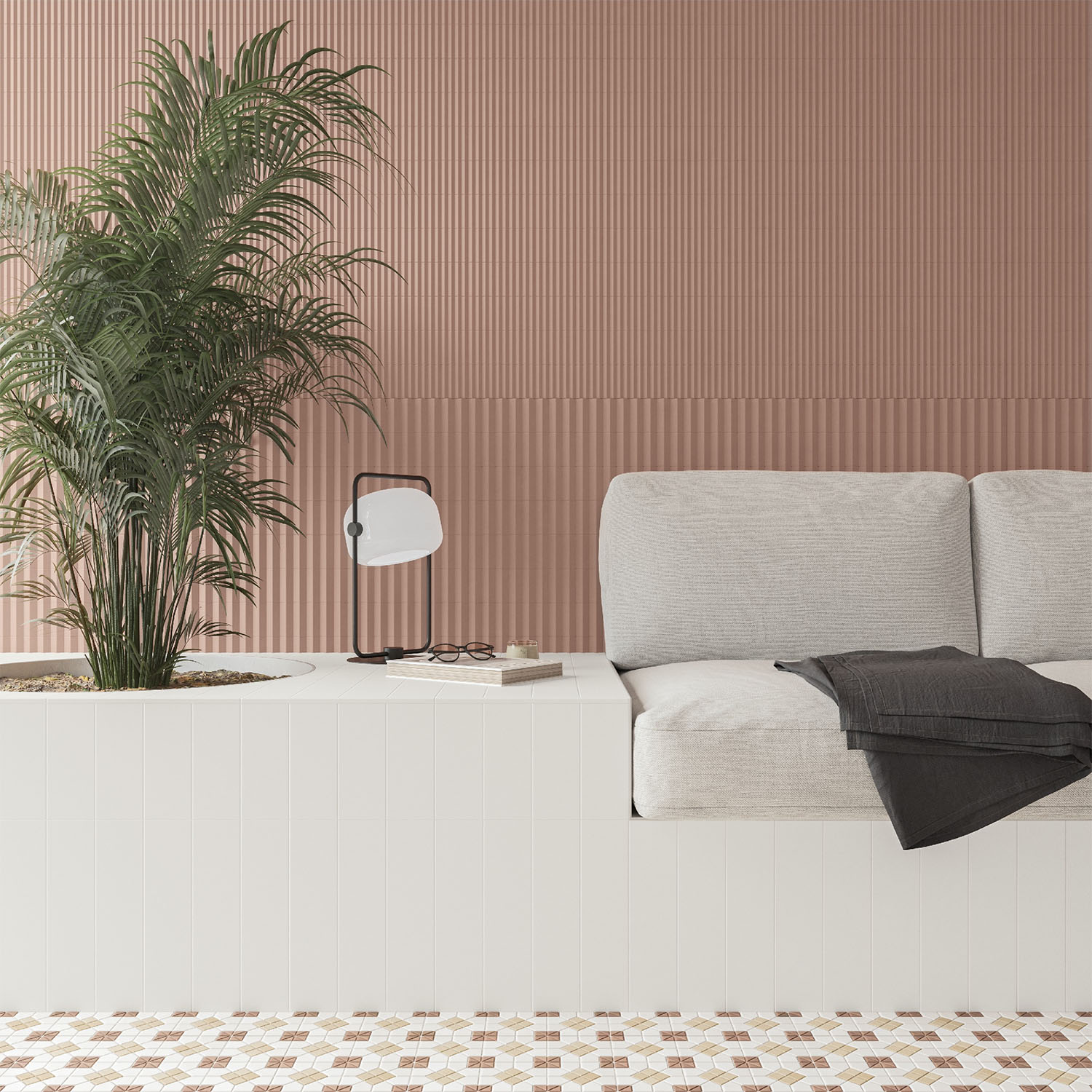 |
7. Set in Stone
These looks draw inspiration from the magnificent beauty of the Earth's ancient geological past. Masterpieces of nature, like limestone, bluestone and slate, are represented with such precision and include characteristics like veining, coal lines and visible fossils. The visual richness of their textures, nuances and details are maintained and paired with the practicality of ceramic.
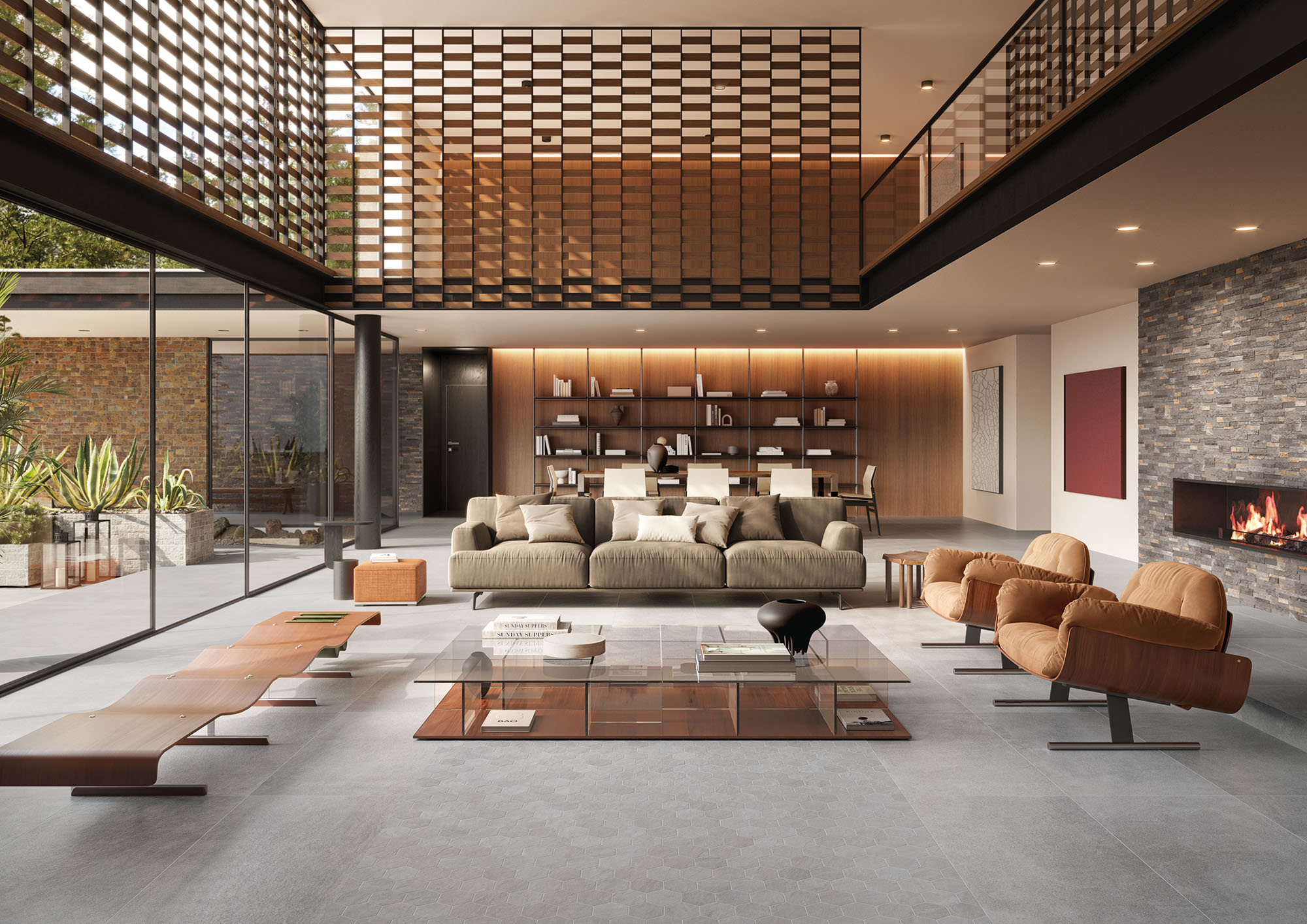
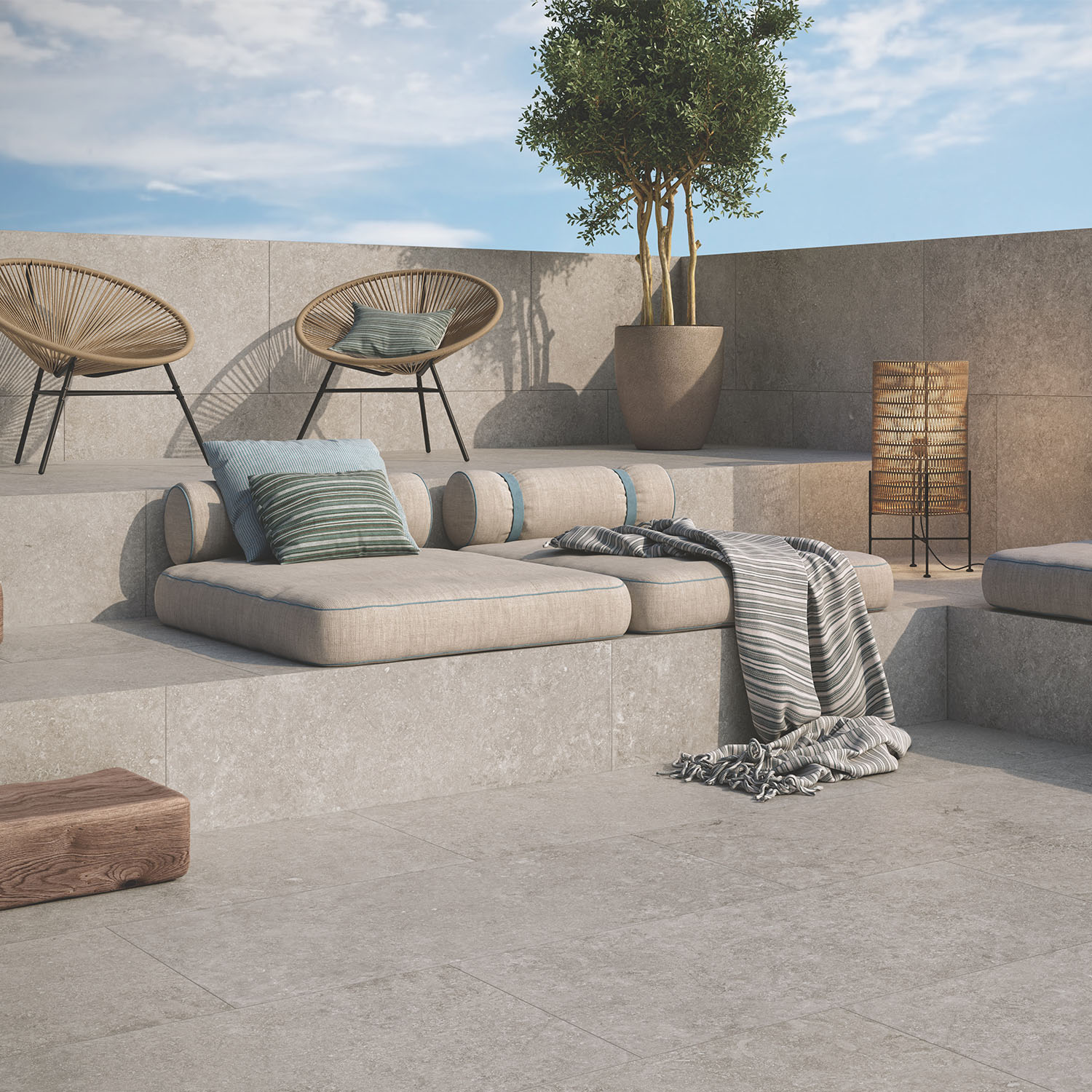 | 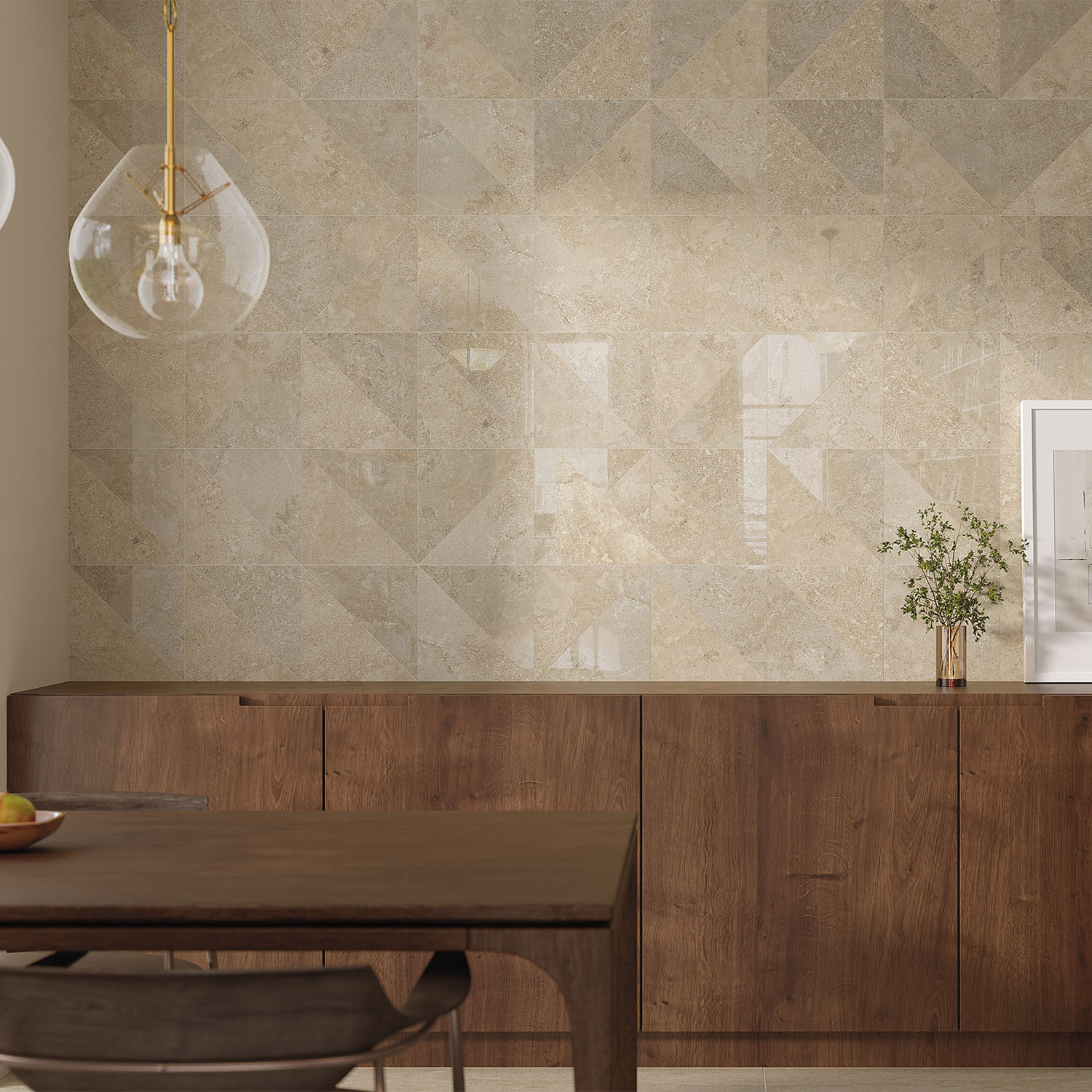 |
8. Tactile Renaissance
Tile manufacturers are wholeheartedly embracing the infusion of rich textures throughout new ceramic collections. As architects and designers explore a growing interest in outfitting built environments in raw and rugged materials, the incorporation of tangible surfaces enables one to adequately interact with and navigate a space. Tiles impressed with deep grooves, subtle fluting, billowing curves and scored strokes are meant to be experienced both visually and physically.
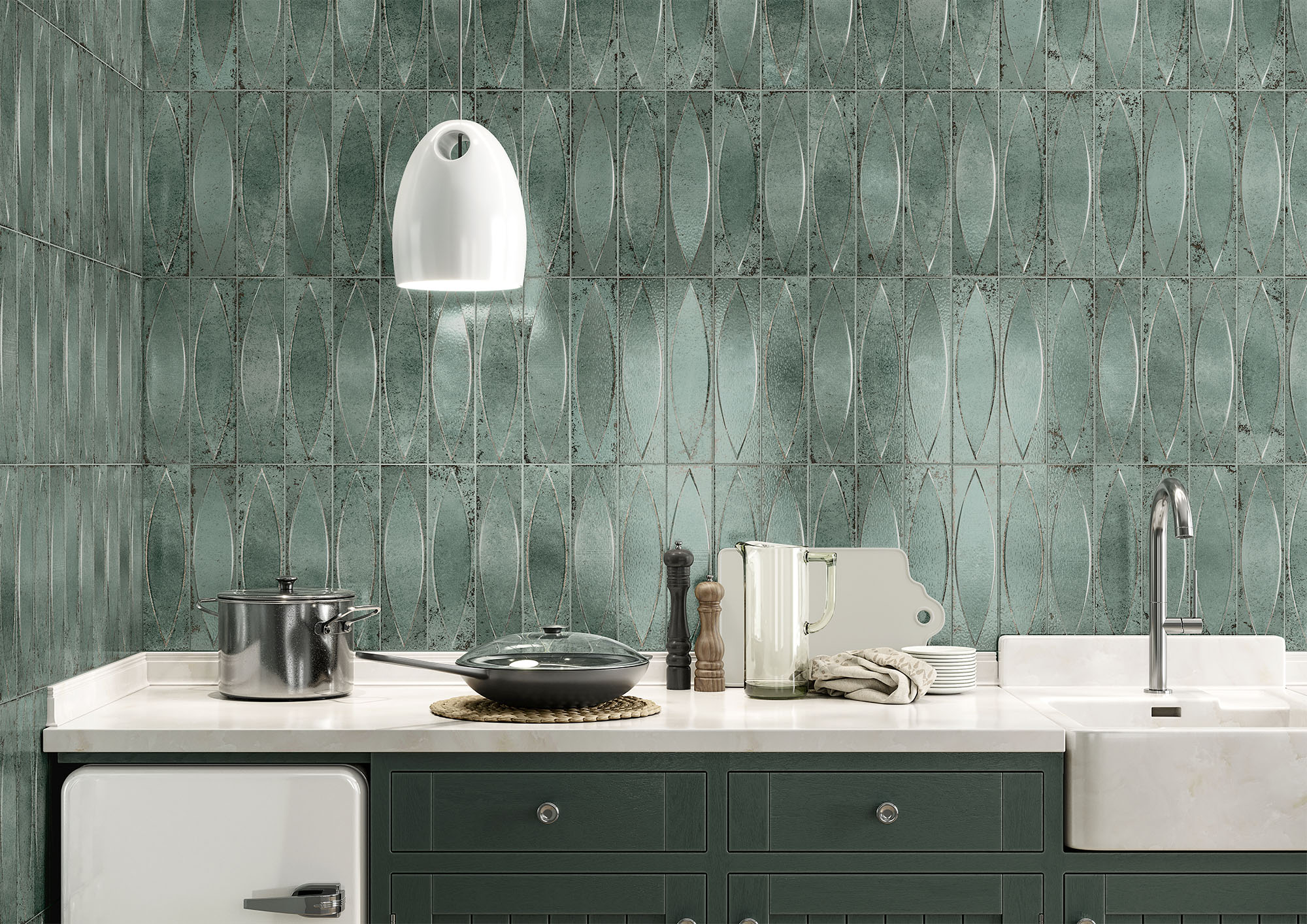
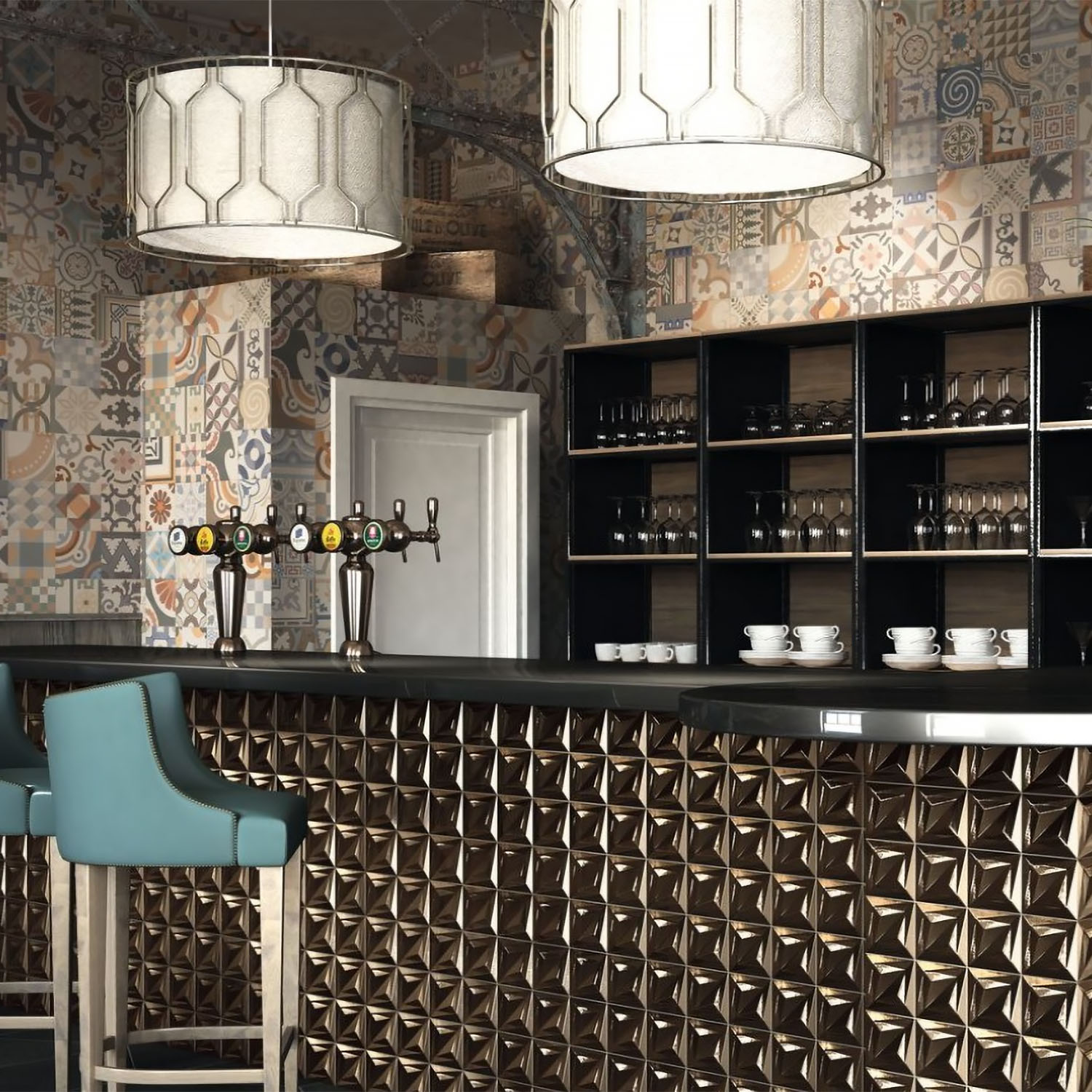 | 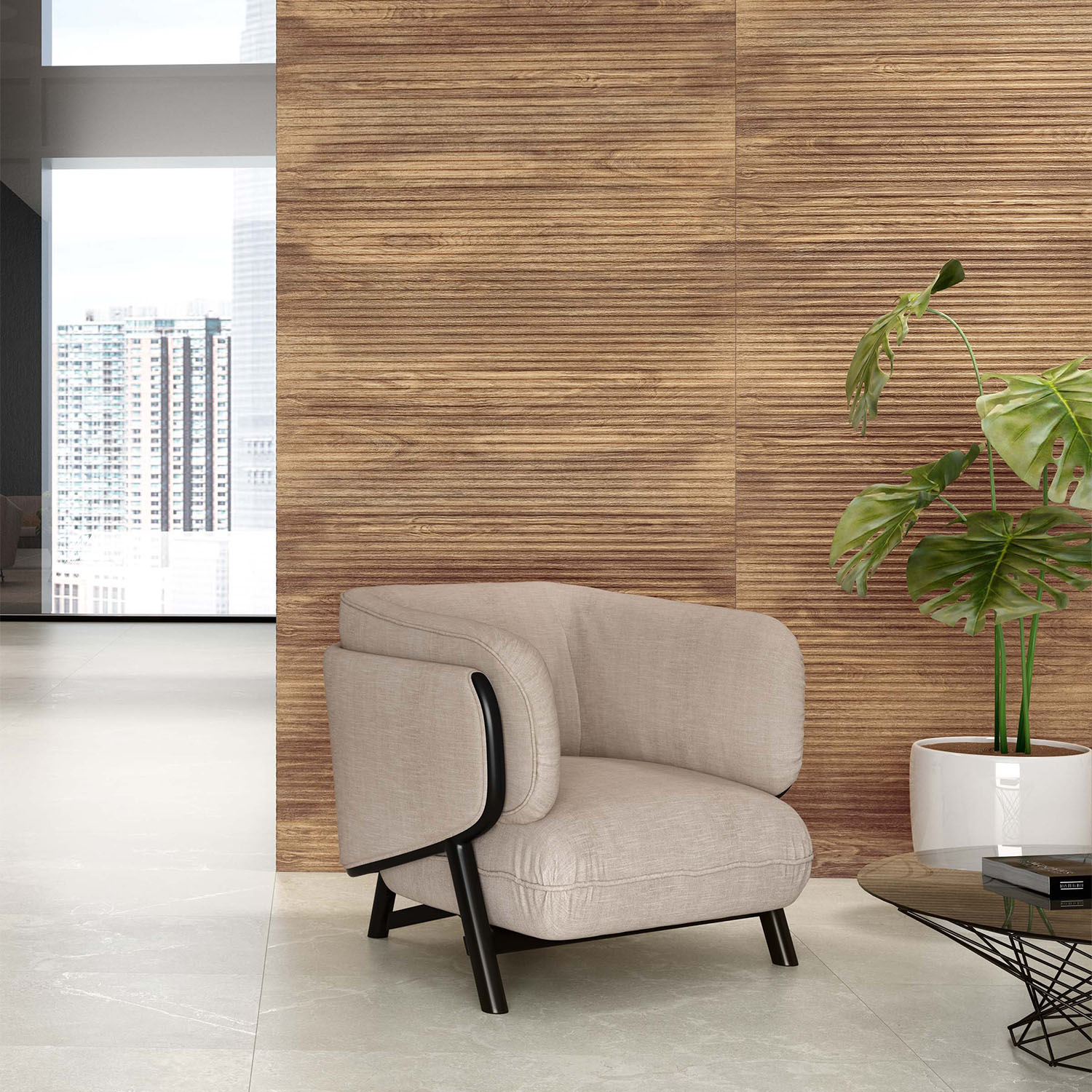 |
9. The Third Dimension
Ceramic tile companies are looking to the third dimension as the next frontier of design. New collections feature a plethora of 3D tiles from fluted and protruding surfaces to reliefs with explosive patterns. As manufacturers work toward producing tiles that look and feel like natural stone, marble prints are now paired with low relief veining for an incredibly realistic appearance.
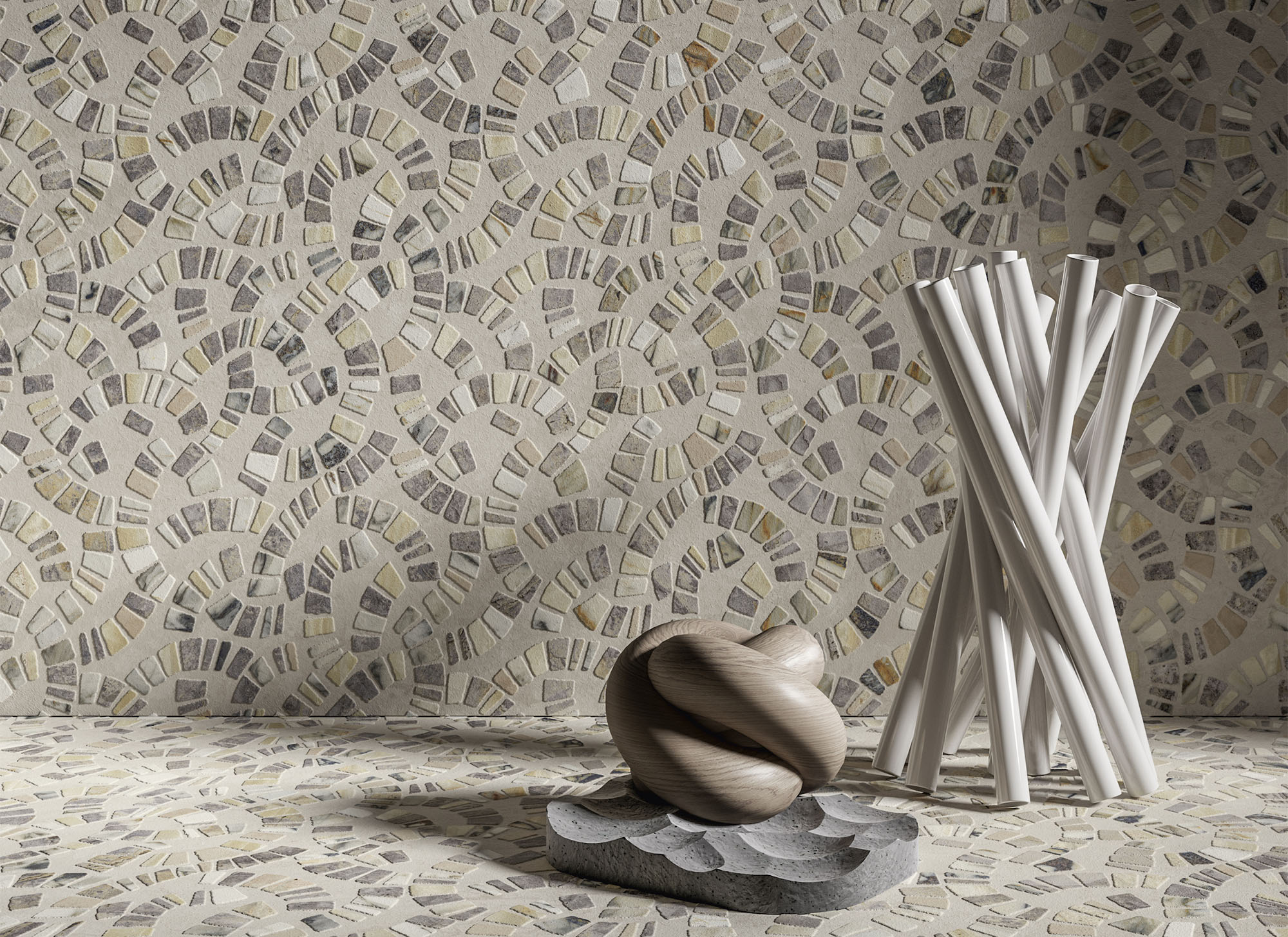
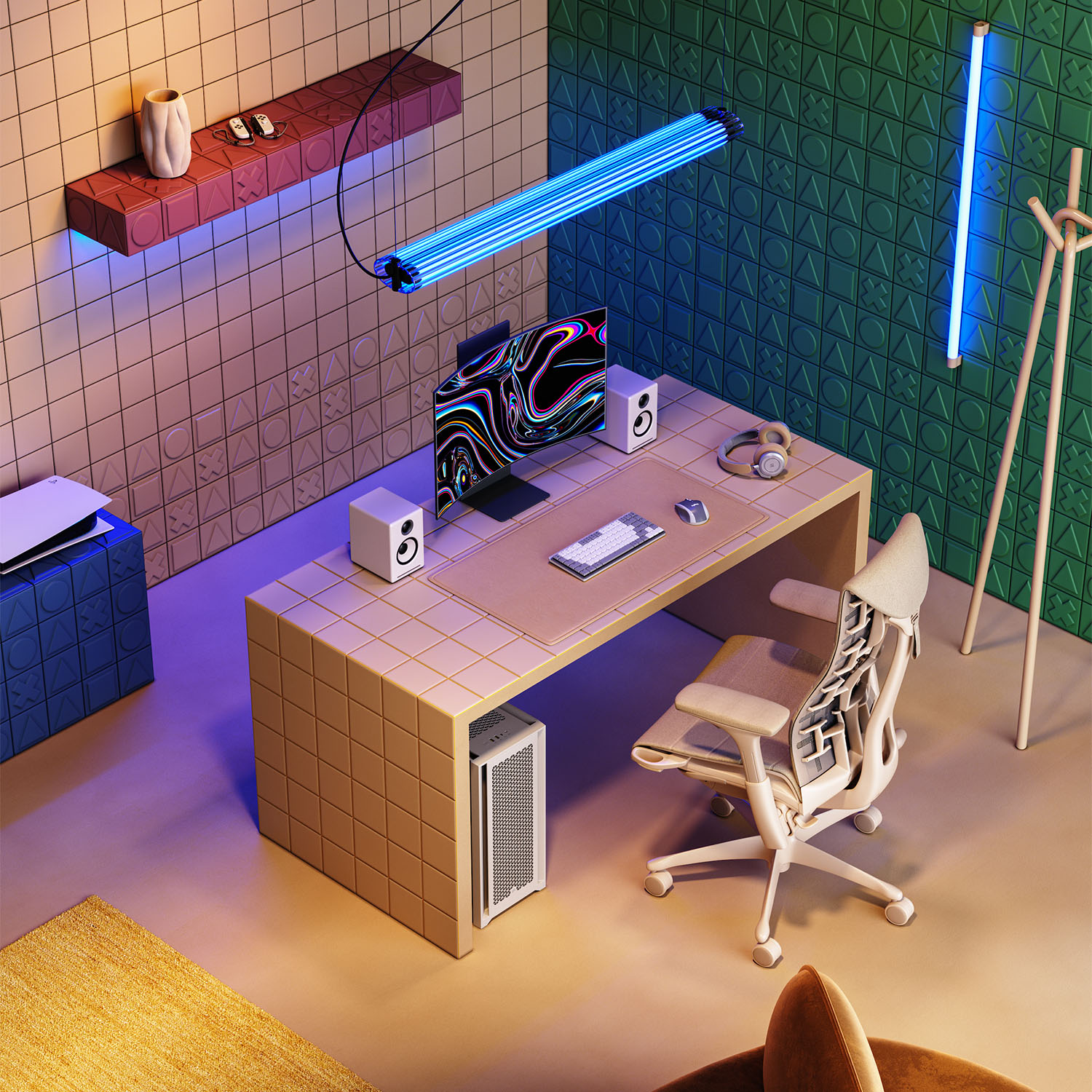 | 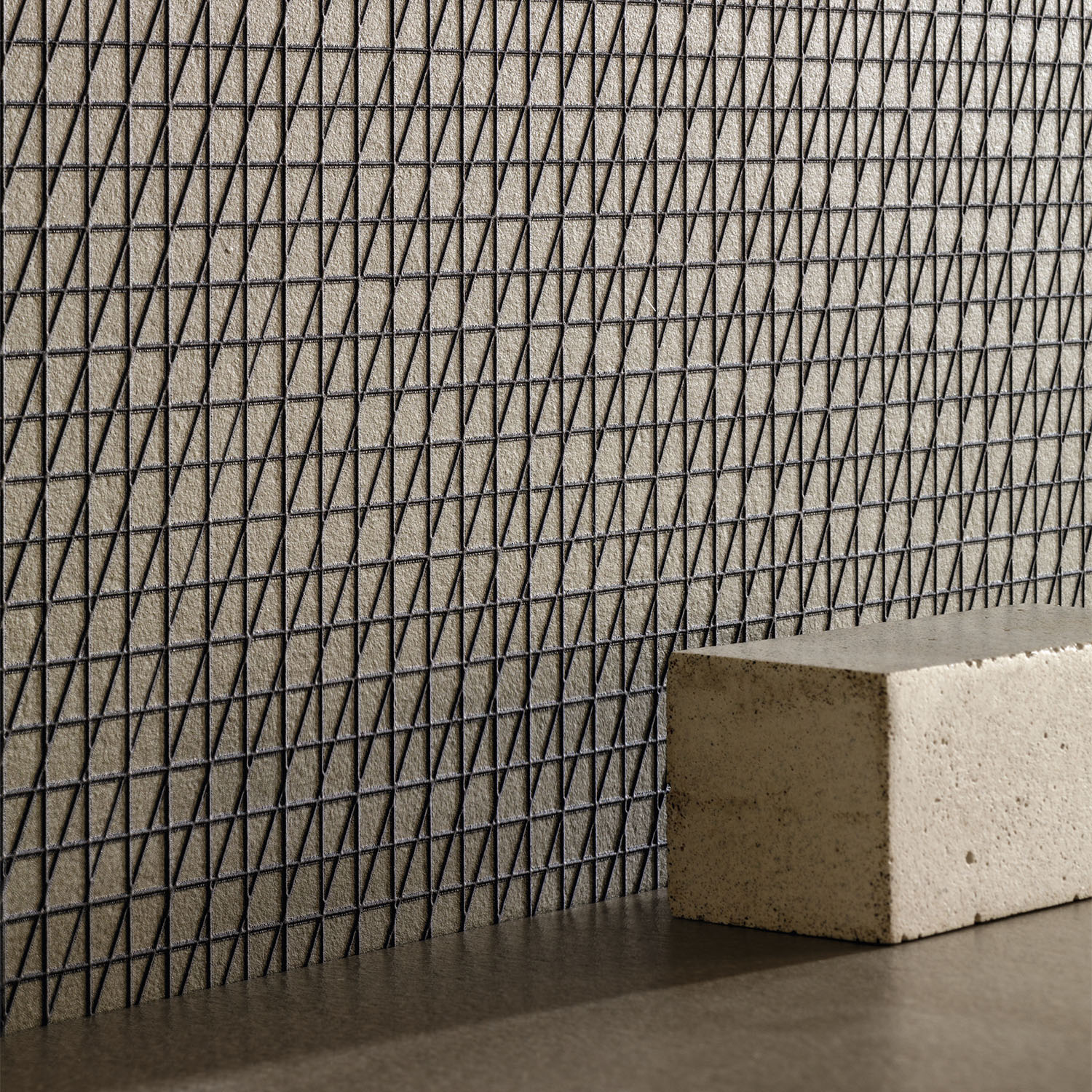 |
10. Trompe L’oeil
From misty forests to overlapping sheets of corrugated metal, tile manufacturers are producing a range of mind-blowing optical illusion effects on porcelain. Given the technical benefits of porcelain, designers can use these digitally printed tiles to their advantage, creating a shower that appears to be enclosed by billowy drapes or the floors of a spa covered in grooved wood-look planks.

 | 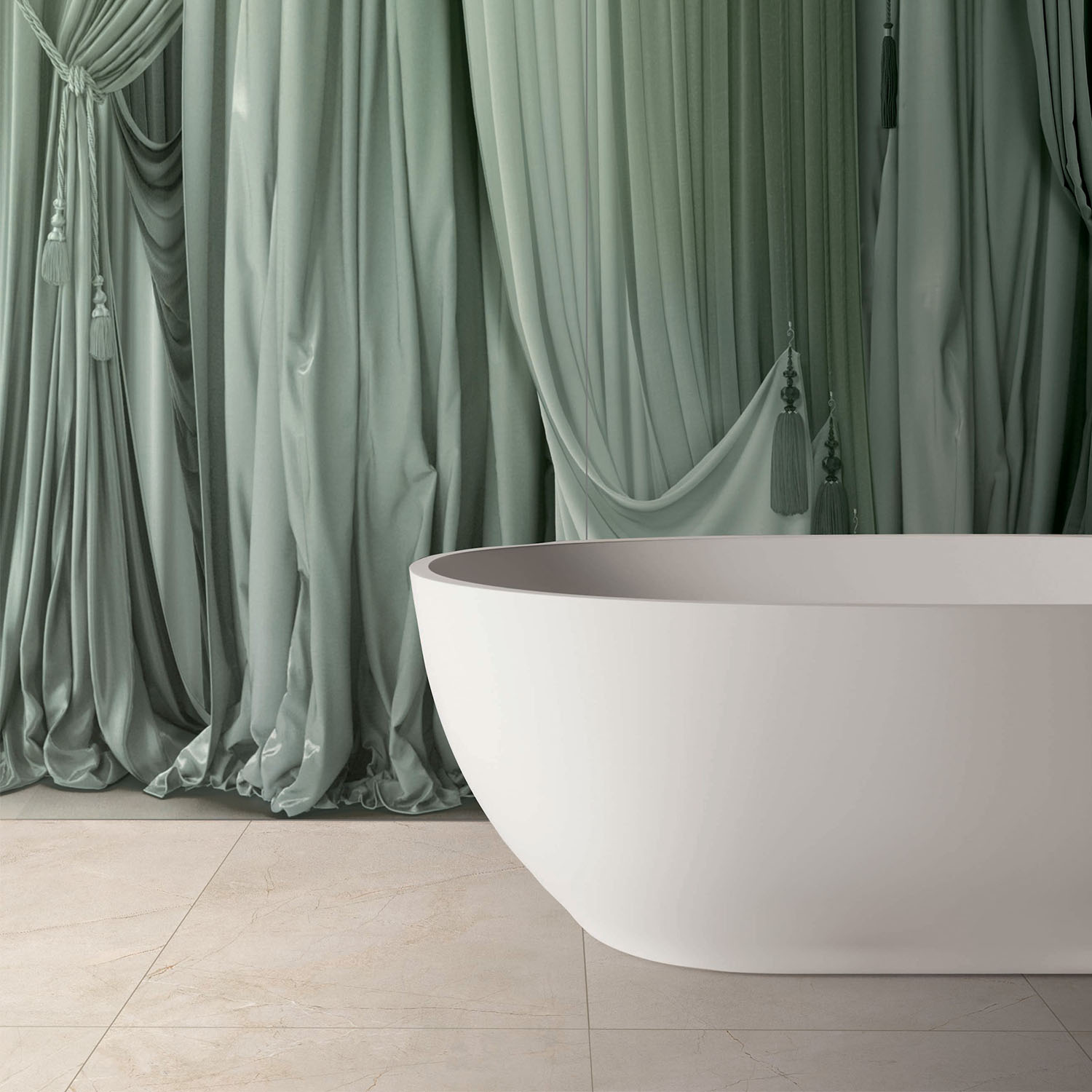 |
Related Stories
Student Housing | May 1, 2024
Pfluger Architects unveils renovated student lounges at all-girls dormitory
In a step toward updating and modernizing on-campus housing to attract a range of students, Texas-based Pfluger Architects renovated the student lounges in Kinsolving Hall, a five-story, all-girls dormitory at The University of Texas at Austin initially built in 1958.
K-12 Schools | Apr 30, 2024
Fully electric Oregon elementary school aims for resilience with microgrid design
The River Grove Elementary School in Oregon was designed for net-zero carbon and resiliency to seismic events, storms, and wildfire. The roughly 82,000-sf school in a Portland suburb will feature a microgrid—a small-scale power grid that operates independently from the area’s electric grid.
AEC Tech | Apr 30, 2024
Lack of organizational readiness is biggest hurdle to artificial intelligence adoption
Managers of companies in the industrial sector, including construction, have bought the hype of artificial intelligence (AI) as a transformative technology, but their organizations are not ready to realize its promise, according to research from IFS, a global cloud enterprise software company. An IFS survey of 1,700 senior decision-makers found that 84% of executives anticipate massive organizational benefits from AI.
Codes and Standards | Apr 30, 2024
Updated document details methods of testing fenestration for exterior walls
The Fenestration and Glazing Industry Alliance (FGIA) updated a document serving a recommended practice for determining test methodology for laboratory and field testing of exterior wall systems. The document pertains to products covered by an AAMA standard such as curtain walls, storefronts, window walls, and sloped glazing. AAMA 501-24, Methods of Test for Exterior Walls was last updated in 2015.
MFPRO+ News | Apr 29, 2024
World’s largest 3D printer could create entire neighborhoods
The University of Maine recently unveiled the world’s largest 3D printer said to be able to create entire neighborhoods. The machine is four times larger than a preceding model that was first tested in 2019. The older model was used to create a 600 sf single-family home made of recyclable wood fiber and bio-resin materials.
K-12 Schools | Apr 29, 2024
Tomorrow's classrooms: Designing schools for the digital age
In a world where technology’s rapid pace has reshaped how we live, work, and communicate, it should be no surprise that it’s also changing the PreK-12 education landscape.
Adaptive Reuse | Apr 29, 2024
6 characteristics of a successful adaptive reuse conversion
In the continuous battle against housing shortages and the surplus of vacant buildings, developers are turning their attention to the viability of adaptive reuse for their properties.
AEC Innovators | Apr 26, 2024
National Institute of Building Sciences announces Building Innovation 2024 schedule
The National Institute of Building Sciences is hosting its annual Building Innovation conference, May 22-24 at the Capital Hilton in Washington, D.C. BI2024 brings together everyone who impacts the built environment: government agencies, contractors, the private sector, architects, scientists, and more.
Mass Timber | Apr 25, 2024
Bjarke Ingels Group designs a mass timber cube structure for the University of Kansas
Bjarke Ingels Group (BIG) and executive architect BNIM have unveiled their design for a new mass timber cube structure called the Makers’ KUbe for the University of Kansas School of Architecture & Design. A six-story, 50,000-sf building for learning and collaboration, the light-filled KUbe will house studio and teaching space, 3D-printing and robotic labs, and a ground-level cafe, all organized around a central core.
Senior Living Design | Apr 24, 2024
Nation's largest Passive House senior living facility completed in Portland, Ore.
Construction of Parkview, a high-rise expansion of a Continuing Care Retirement Community (CCRC) in Portland, Ore., completed recently. The senior living facility is touted as the largest Passive House structure on the West Coast, and the largest Passive House senior living building in the country.




